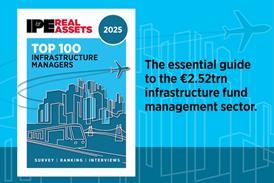Even when capital was as plentiful as funds to invest it in, emerging markets were by definition a risky proposition. Yet a slew of recent fund launches and closings suggests local fund managers are willing to look past the usual suspects.
The provenance of some of the new funds shows a shift away from global funds launched by investment banks towards local funds ranging from the niche to the downright exotic.Eurasia Capital Management, the Singapore-based investment manager, for instance, reportedly plans to increase the size of its Mongolian fund to US$100m (€68.2m) from its current portfolio size of $20m and launch further funds in Central Asia. The Mongolian portfolio comprises mining and infrastructure assets.
Just as investors expanded outside the UK and continental Europe into higher-risk Central and Eastern European markets, investors in Asian real estate markets are looking outside the relatively mature Japan to semi-mature markets such as Malaysia for returns.
Among early European pension fund investors in Asian property funds was the Finnish Local Government Pensions Institution (LGPI). The scheme was the cornerstone investor in Aberdeen's €100m 10-year AIPP Select and has invested in the Franklin Templeton Asian Real Estate Fund. Both are fund-of-funds focused on mature and semi-mature Asian markets.
The scheme's caution reflects the toe-dipping approach taken by many European pension funds. "Naturally, we understand that Asia is not a single market but consists of many submarkets at different stages of economic and political development," says Erkki Markkola, real estate CIO at the scheme. "At this point we have not set any targets for various regions or submarkets but started to create diversified portfolio geographically and by sector."
Markkola hints that the LGPI might not stay with the risk-mitigating structure. "We will continue progressing in an indirect way, as we have done also in Europe [but] direct investments into property funds are more probable," he says.
More Indian funds
Indian property funds have aggressively targeted both international institutional and (notably Middle East) high-net-worth investors. Mumbai-based Saffron Asset Advisors announced in August that it had initiated a six-month fundraising round for a target US$200m Indian property fund. A second fund that invests in Indian hotels, logistics, residential and offices will close in September.
Similarly, an Indian subsidiary of US private equity firm Walton Street Capital, is raising funds in anticipation of a March closing for a US$1bn real estate fund. It will be the
successor to a global fund part-committed to Indian property, but with a focus on affordable housing.
SITQ, the CA$12.4bn (€7.9bn) office and business park subsidiary of the Caisse de dépôt et placement du Québec, plans to switch 15% of its portfolio to Indian real estate within five years. SITQ's investment limitations, says spokeswoman Julie Raymond, are set by India's FDI regulation, "which is channelling foreign investment in commercial property toward development projects" and an approach defined by co-investment with local players.
"In terms of investments in emerging markets," she says. "We do not expect to change our India Investment strategy in the short term. We have made a long-term commitment to this market, which will be reviewed time to time to factor in market conditions, as well as social and political trends."
Mexico beats Mongolia
For investors not yet ready for Mongolian mining, BRIC (Brazil, Russia, India and China) economies are the obvious targets for funds - and their capital contributors - looking to diversify to and within emerging markets. But North American pension funds are looking beyond Brazil to other Latin American markets for real estate opportunities. Distressed Mexican assets are among those targeted by a global fund being raised by Morgan Stanley, with the Pennsylvania Public School Employees' Retirement System among its investors.
Proximity is perhaps one reason why North American pension funds have been quicker than their European cousins to explore Latin American real estate markets. The CA$108.5bn Ontario Teachers' Pension Plan (OTPP), for instance, has invested in both Brazilian real estate and Chilean infrastructure with the acquisition in December of 69% of Esval, a water services firm.
Communications director Deborah Allen says: "You have to ask what counts as an emerging market. Brazil is investment-grade, so is it still an emerging market?
"We're definitely looking at BRIC - but outside those markets, too. It depends what governments' needs are and what opportunities there are. Emerging markets tend to have opportunities but there's a cap on the amount of risk we're willing to take."
In the meantime, even large, bold pension schemes are stopping at the border of yet-to-emerge economies. Jane Delfendahl of CalPERS's global real estate unit says the US$250bn US scheme will avoid frontier markets - investment in which would in any case require ad hoc permission from the scheme's investment committee.
The scheme will invest in "emerging Asia, emerging Europe, and also some Latin America" - Brazil, Mexico, Argentina, Chile, Colombia and Peru - over the next decade.
"Common elements might be high growth and a high level of urbanisation trend," she says.
Kings of the wild frontier?
With at least two BRIC economies shifting from ‘emerging' to ‘emerged', funds could opt for so-called ‘frontier' markets - higher-risk markets on the edge of political and economic stability. But it's unlikely. Even Standard Chartered, the emerging markets specialist bank, will likely stick to relatively stable economies such as South Africa for its planned US$1bn fund for African real estate.
In any case, the pension schemes most likely to be outriders in as-yet relatively untapped markets are outside the fund managers' universe because they're likely to invest directly. Others are waiting - for the brick dust to settle, or for regulatory permission to invest at all.
The NOK1.992tn (€252bn) Norwegian Government Pension Fund - Global recently announced that it would allocate up to 5% of its portfolio to real estate and increase its investment in emerging market s. Will they coincide - that is, will part of that investment be diverted into emerging market real estate?
"We expect to start investing quite soon but we haven't finalised the detail of the mandate yet," says Vik Vegard, global head of investment policy at Norges Bank Investment Management, which manages the fund. "As a general principle, the broader the diversification, the better."

















